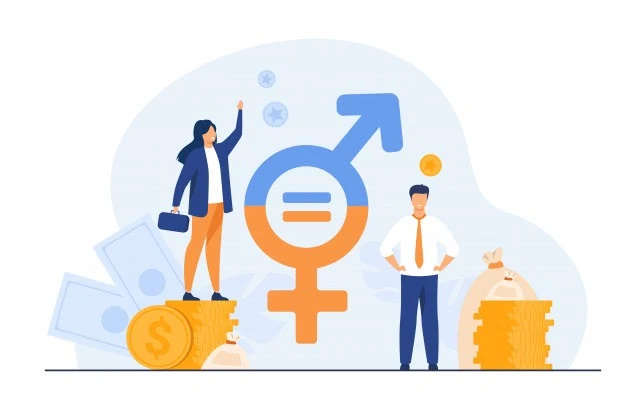Ad Code
Translate
List of 6,000+ Dofollow Commentluv Blogs FREE (Updated 2025)
January 16, 2025
What is Ozempic (semaglutide)? (Updated in 2025)
January 30, 2025
How To Find Suitable Properties In Cyprus? (Updated in 2025)
January 11, 2025
Smart strategies for trading on crypto exchanges
April 23, 2025
Overview of Equal Employment Opportunity
Khabza Mkhize
December 15, 2022
Employment is always a hot topic among people and organizations; hence, whether it’s about employment ratio, unemployment rate or equal employment opportunity.
People invariably talk about employment or the existing recruiting process.
Recruitment is a caseless methodology that must be transparent and equal for each candidate to refrain from religious discrimination lawyers and other forms of discrimination lawyers needing to get involved with the business. This is what today’s topic is: Equal Employment Opportunity.
Equal employment opportunity is one of the crucial concepts in society. Thus, it should be well highlighted to be aware of each individual associated with it, i.e. employers, employees, and the human resource managers.
This article will give you an insight into equal employment opportunity and its laws and policy.
What is Equal Employment Opportunity?
Equal employment opportunity is the equal chance to retain and maintain employment in any company or other institution. Moreover, employers can engage and interact with the hiring process under the law of EEO. It's not acceptable to discriminate between candidates based on different criteria.
The Parameters of Discrimination that are Strictly Prohibited
Every candidate deserves a discrimination-free recruitment process and equal job opportunities. Besides, it can’t be deniable that discrimination within the hiring happened many times. This discrimination is the primary reason for not getting equal employment opportunities.
Let’s see what the discrimination parameters are:
- Age
- Gender
- Religion
- Colour
- National origin
- Physical disability
- Marital status
- Medical record
- Spiritual, traditional or customary beliefs
Above are the parameters that should be avoidable while conducting a recruitment process to provide equal employment opportunities to all candidates.
EEO (Equal Employment Opportunity) Policy
The EEO policy has been formed to eliminate employment discrimination from the process of job opportunities.
Through this policy, the government is trying to make a diverse workplace where all the significant elements, such as equality, respect and consideration, become a new norm. Besides, many more objectives are behind the policy of EEO.
Thus, let’s see the objective Equal Employment Opportunity and Anti-Discrimination Policy.
- To encourage the employees to take a positive step toward promoting equal opportunity throughout the organization.
- To ensure employees are treated fairly.
- Provide equal opportunities by escaping the affecting factors like discrimination, harassment, and victimization.
- To support equal employment opportunities for women, members of ethnic minorities, aboriginal and Torres Strait Islanders and people with a disability. Members of these groups have been discriminated against historically, so they may need extra measures to ensure equal opportunities in all employment areas.
Scope
The policy of equal employment opportunity applies to all aspects and factors of the relationship between the company and its employee, including:
- Recruitment
- Employment
- Training
- Promotion
- Transfer
- Working condition
- Wages and monthly salary
- Employee benefits
The policy applies to each individual, paid or voluntary. At the same time, employers can be responsible for the behaviour of their employees.
Benefits of Equal Employment Opportunity
Equal employment opportunity law is not only beneficial for individuals(Employees) but also for the organization; you can learn more here by speaking to professionals.
Individuals, i.e., employees, get clarity about the baseline of accepted behaviour. This is crucial in a diverse workplace where people belong to different lifestyles, values, and backgrounds.
EEO helps employees be pretty and equal, and this equal treatment boosts the employees' productivity and performance.
The organization and employers enjoy the main benefit. Employers can form a more diverse workplace with the law of equal employment opportunity according to the best talent. Many studies have shown that diversity in the workplace improves the retention rate with employee satisfaction. Moreover, it generates more revenue for the company.
- Relevant Legislation
- Equal Opportunity Act 2010
- Racial and Religious Tolerance Act 2001
- Sex Discrimination Act 1984
- Racial Discrimination Act 1975
- Disability Discrimination Act 1992
- Human Rights and Equal Opportunity Commission Act 1986
- Fair Work Act 2009
Related Policy
- Staff Grievance Policy
- Code of Conduct
Related post: Employment Law: Do You Need It?
Finally, about Equal Employment Opportunity
The EEOC is the front line of the contest for equal employment opportunity and is the root of EEO practices, processes and impacts. The goal is to pay attention to workplace discrimination and hiring, firing, promotion, training, and wages.
One way to offer equal employment opportunities to the candidates is by using advanced technology like the Applicant Tracking System. This technology is unaware of any parameter of discrimination.
Featured Post
12 Prominent new technologies and trends emerging in 2025
Khabza Mkhize-
April 02, 2025
Soapie Teasers
Sister Sites
Most Popular
List of 6,000+ Dofollow Commentluv Blogs FREE (Updated 2025)
January 16, 2025
Smart strategies for trading on crypto exchanges
April 23, 2025
Popular posts
List of 6,000+ Dofollow Commentluv Blogs FREE (Updated 2025)
January 16, 2025
Smart strategies for trading on crypto exchanges
April 23, 2025
What is Ozempic (semaglutide)? (Updated in 2025)
January 30, 2025
Footer Menu Widget
Created By Blogspot Theme | Distributed By Gooyaabi Templates



0 Comments